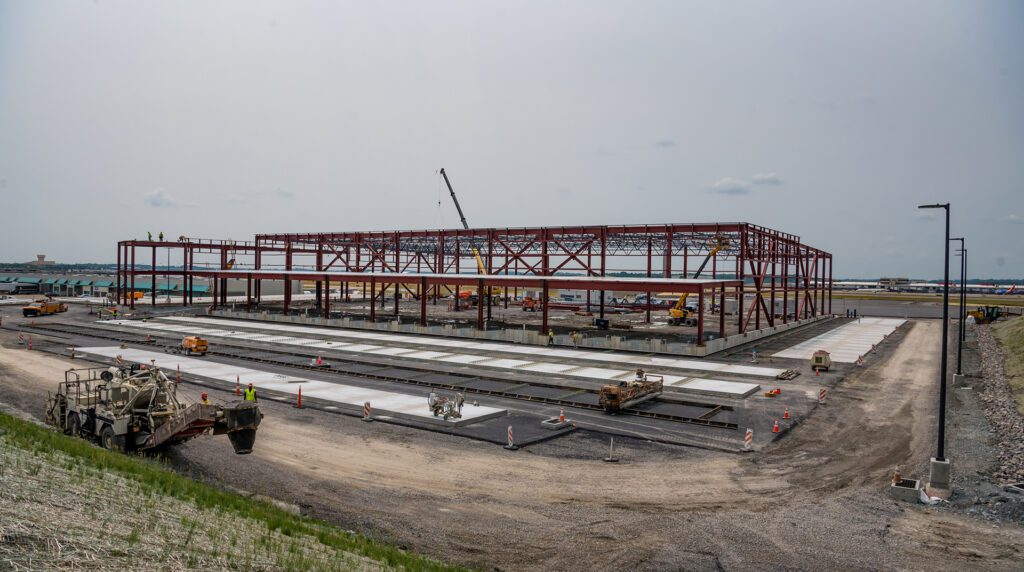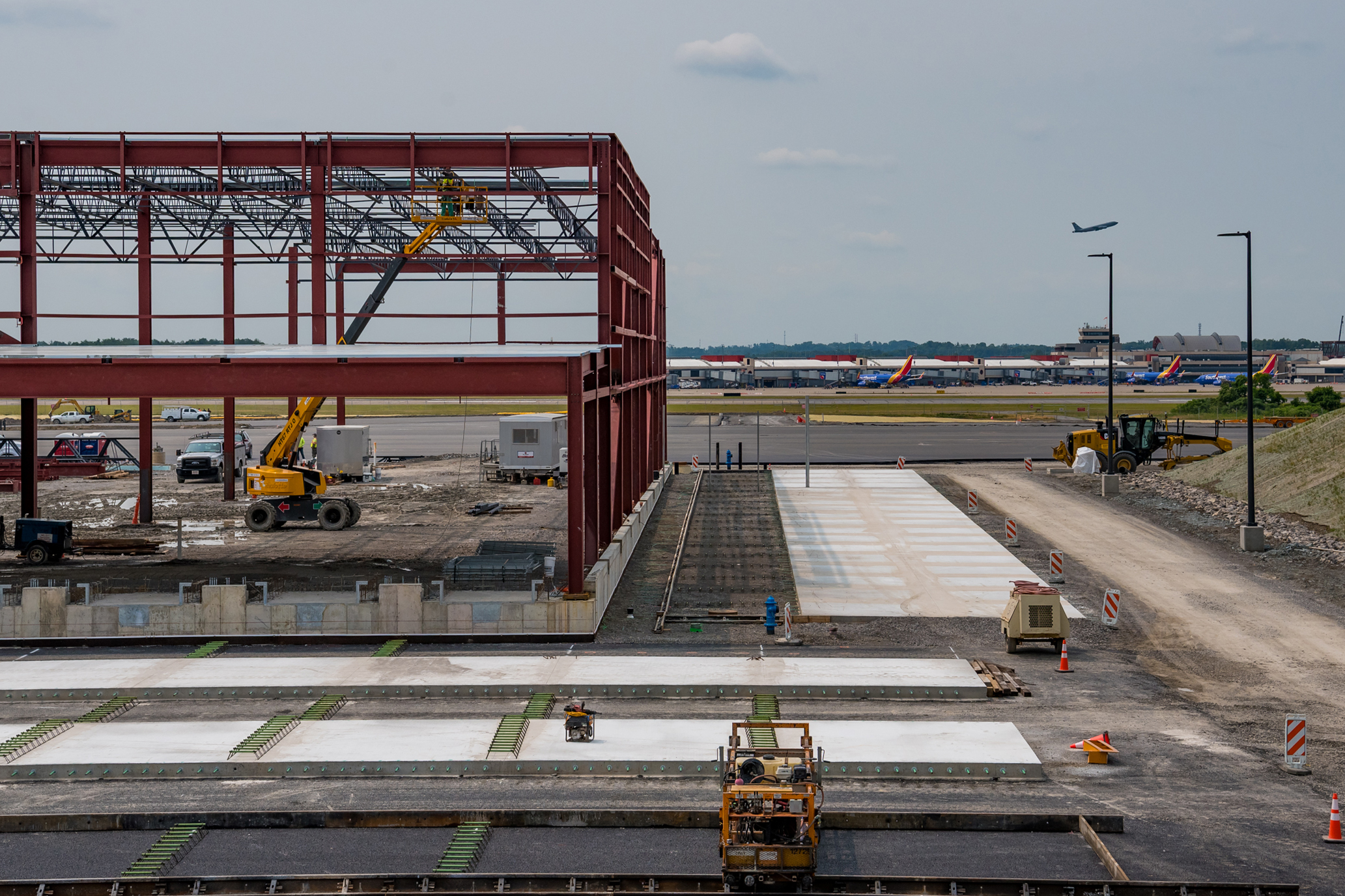Disrupting the Cargo Business Model at PIT
By Bryan Dietz
Published June 26, 2023
Read Time: 5 mins
As the COVID-19 pandemic decimated most industries, including commercial air travel, its fraternal twin air cargo surged in activity and profitability. This was a boon for airports (including Pittsburgh) that saw record levels of cargo service and traffic as shippers and forwarders sought alternatives to badly congested major gateway airports.
Now, as supply chains and the world economy stabilize, one key question is the degree to which the air cargo industry returns to pre-pandemic “business as usual.” Will it go back to concentrating international freight at primary gateway airports in order to minimize cost per kilo at the expense of slower and less-reliable service? Or will enough shippers and consignees stay committed to increasing their supply chain resilience by continuing to use alternate airports in order to reduce dependence on major gateways that may suffer additional disruptions in the future?
Will forwarders and shippers go back to the old ways?
The pandemic wrought many changes in the world and reminded C-suites and boardrooms that supply chains are both critical to their businesses and a major source of risk. Further, there seems to be a widespread expectation that the world economy will see more significant disruptions—whether from public health emergencies, natural disasters, geopolitical tensions or other causes—in the next 10 years than in the decade preceding the pandemic. One key strategic question is how the world will change permanently versus going back to pre-pandemic status quo. Key areas to watch include:
- Where goods are manufactured. In response to pandemic disruptions and rising geopolitical tensions, many manufacturers and retailers in the U.S. and Europe are rethinking long-distance supply chains in general. The return of industrial policy, particularly in the U.S., is changing the sourcing calculus in favor of domestic production of strategic products such as semiconductors and EV batteries. Increased automation is making factories in high labor-cost countries more competitive with distant, low-cost production centers.
- How goods move to market. Before the pandemic, many shippers, importers and freight forwarders deliberately concentrated international shipments at primary air and ocean gateways to minimize transport cost per unit. However, many major gateways were substantially disrupted during the pandemic, and still are vulnerable to disruption for other reasons. Several multinational freight forwarders and ocean carriers have established “own-controlled” freighter operations in order to ensure access to capacity, to utilize uncongested alternative gateways and to have flexibility to change flight routings in response to demand opportunities and operational problems.
- How much inventory firms carry. For years, the conventional wisdom was that companies need to pursue lean inventory strategies in order to reduce use of capital and improve profitability. The real challenges of keeping the right products in stock during the pandemic and the fear of future supply chain disruptions may induce firms to carry more “safety stock” inventory, even as rising interest rates drive up the cost of working capital tied up in inventory.
- Growing importance of sustainability. There is growing evidence that consumers actually are willing to switch brands, and to spend more, in order to help protect the environment. Shareholders are increasingly demanding proof that companies—including manufacturers, retailers and transportation providers—are implementing meaningful environmental, social and governance (ESG) policies.
Of course, the degree to which businesses change behavior will vary across industries and the firms within each industry. Generally, we expect that industries most likely to permanently change their supply chain strategies include:
- Strategic industries such as semiconductors and green energy that are the subject of government industrial policy and attendant incentives intended to increase domestic and friendly-country production;
- Other industries that are relatively sensitive to supply chain disruptions, concern about intellectual property protection and/or changing manufacturing economics, such as:
- Physically perishable goods that will spoil if not delivered swiftly to consumers (e.g., cut flowers and fresh seafood)
- Economically perishable goods with short product life-cycles due to rapid technological change or fickle consumer tastes (e.g., electronics, fashion apparel)
- Goods that have high business process impairment costs (e.g., components needed to keep an automobile assembly line moving on schedule)
- Goods that involve use of proprietary technology or intellectual property that its owners seek to protect by moving manufacturing to countries with strong rule of law

PIT’s Cargo 4 facility will be able to handle any cargo aircraft flying today. Its expanded apron will be able to serve two Boeing 747-8 Freighters side by side, or up to four Boeing 757-200s at once. (Photo by Beth Hollerich)
Critical success factors
So how might these factors drive demand for non-traditional air cargo gateways in the U.S. and Europe?
It’s useful to think about the competitive advantage of different gateway airports in terms of the “three C’s”:
- Capacity: Runways, terminals, trucks
- Cost: Airport charges, trucking distance
- Consistency: On-time flights, terminal processing time and punctuality, road congestion
The relative importance of the three C’s changes over time. For example, during the pandemic, capacity was the paramount consideration for many shippers and forwarders who were struggling to move products to market. During the current freight recession, cost is likely the most important factor.
So what enables a handful of non-traditional gateways to succeed where so many other airports have not? Two additional factors stand out:
- Customers: Large shippers or forwarders willing to make commitments that reduce airline risk of opening new routes.
- Commitment: Airport and community partnerships can make cargo and customer success a true, long-term priority with some key investments. Commitment includes physical and digital infrastructure investments, operational excellence, and even creative ways to mitigate risk through incentives and other unique mechanisms.
Advantages at PIT
To make the discussion more focused and practical, let’s consider the reasons why Pittsburgh can join the exclusive club of successful international freighter gateways.
- Strong fundamentals including a location that allows for efficient access to the east coast, Midwest and Canada and new infrastructure with a new cargo facility opening in 2024.
- A strong emphasis on sustainability, including sustainable aviation fuel (SAF) and an efficient microgrid powered by natural gas and solar energy
- Strategic patience and sustained focus on achievable goals, regardless of periodic downturns in air cargo demand
- A dedicated cargo team with a true commitment to customer success that invests in unique approaches to solve key operational impacts.
Of course, talk is cheap. Pittsburgh International Airport has proven its capabilities and operational excellence, especially during the pandemic, earning the business—and trust—of forwarders and shippers who capitalized on PIT’s strategic commitment to cargo and logistics. We go further for air cargo, and we’re excited for what’s ahead.
Bryan Dietz is the senior vice president of Air Service & Commercial Development at the Allegheny County Airport Authority which operates Pittsburgh International Airport and Allegheny County Airport.
Watch
This Next
Read
This Next






